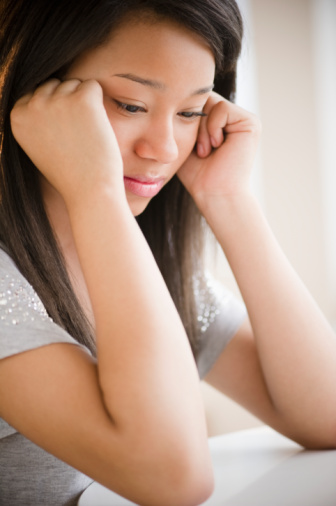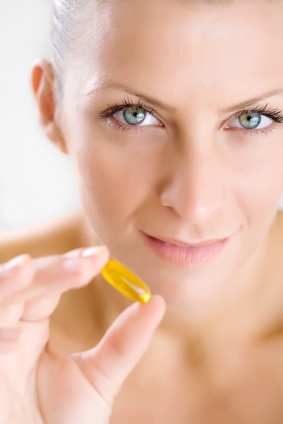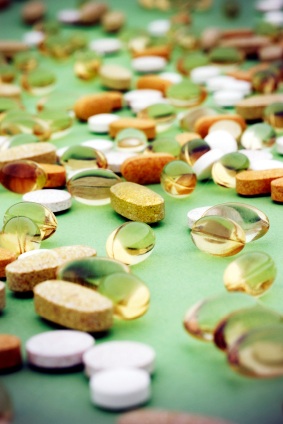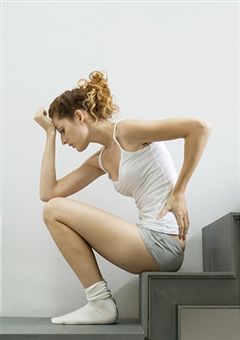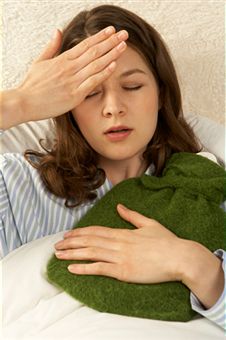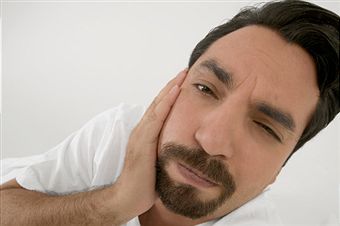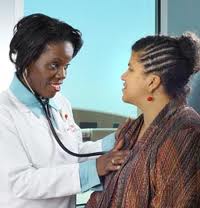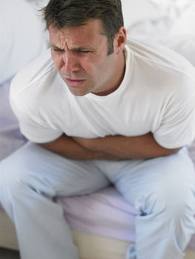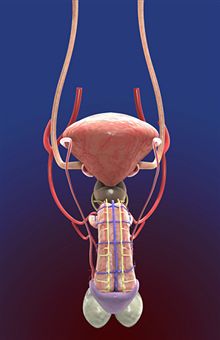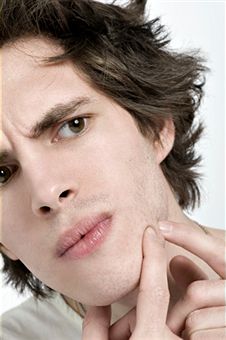Understanding Sexual Impotence: Causes, Treatments and Cures
There are many different types and levels of sexual dysfunction. It is very common for men and women alike to suffer from some form of sexual dysfunction at various points in their lives; occasional sexual dysfunction, meaning problems occur in less than 15-20% of all sexual experiences, is often considered normal and does not usually require treatment. Persistent problems with sexual health that affect a person’s quality of life in a negative way should be evaluated by a physician as soon as possible, just as with any abnormal health issues that may arise.
Some forms of sexual dysfunction are more debilitating than others, and long term sexual impotence in men is considered one of the most debilitating forms. The good news is most cases of sexual impotence can be treated with one or more of the variety of methods available today. Not all treatments, devices or medications used to help relieve the effects of sexual dysfunction are covered by insurance companies.
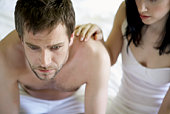
Sexual impotence in men, also commonly referred to as erectile dysfunction, can impede normal sexual function by making it difficult to achieve an erection. Some men who experience erectile dysfunction will find they can achieve an erection, but not maintain one long enough to engage in full sexual satisfaction. Women may also experience sexual dysfunction, however in most cases sex is still possible. Without an erection, a man cannot effectively complete the normal sexual response cycle.
Possible Causes of Sexual Impotence
There are a number of possible causes for sexual impotence. For men and women, hormones may play a big role in several forms of sexual dysfunctions. In women with sexual dysfunction disorders, a lack of estrogen and progesterone may cause vaginal dryness, which may result in painful sexual intercourse. In men, a lack of testosterone may inhibit sex drive, or the desire to be sexually active.
Lack of desire and other more emotional aspects of sexual dysfunction should be ruled out or addressed as early on as possible. The psychological approach to sexual impotence and other dysfunctions can help pinpoint where the root of the problem lies in a particular individual. In some cases, an inability to achieve or maintain an erection may be a matter of not being sexually attracted to one’s partner. The issue of attraction, or a lack thereof, might be easily remedied if one is single, but can cause obvious complications between people in a monogamous relationship.
Dealing With Trauma
Psychological traumas or moral conflicts can also impede sexual function and lead to sexual impotence. In both men and women, individuals raised to believe that sex is “dirty” or “wrong” may have a difficult time engaging in healthy sexual relationships as adults, and may experience sexual dysfunction. Issues of molestation, rape or other types of abuse can also greatly contribute to, or indeed, define, one’s reaction to sexual stimuli.
Performance anxiety and other types of nervousness related specifically to the sexual experience may be a primary cause of inability to achieve or maintain an erection in men. Issues with intimacy can be the root of sexual dysfunction for men and women alike, and can greatly affect the quality of a person’s life.
Physical Problems
In addition to psychological causes of sexual impotence or erectile dysfunction, there are also many very common physical causes. Certain diseases and medical conditions, even if seemingly unrelated to sexual health, can have a great impact on sexual functions.
Problems with the vascular system can cause erectile dysfunction if there isn’t adequate blood flow to the penis. Cardiac conditions, such as heart disease, can also affect sexual performance, as can organ failure. Conditions such as failure of the liver or kidneys can cause many of the body’s systems to stop functioning normally, and emergency medical attention is required if this is suspected.
Glandular Problems
Erectile dysfunction, or sexual impotence, can also be related to glandular problems or conditions affecting the body’s central nervous system. Aging can accelerate the deterioration of many of the body’s functions and cause an overall decline in health, including sexual health, though aging alone should not be considered a typical “cause” of sexual dysfunction.
Cause of sexual dysfunction can be determined by a physician through a battery of tests and screenings. For example, a neurologist may perform tests to determine if the underlying cause of a person’s sexual impotence could be related to their nervous system. If the sensory systems are not working properly, or if signals sent from the body to the brain are misfiring, touch stimulation may not cause the intended arousal and therefore would impede an erection or orgasm.
Additional Monitoring & Testing
In cases where it is initially difficult to pinpoint the source of the sexual impotence of a man, he may be monitored at sleep clinic to determine if the inability to achieve erections during desired sexual activity is psychological or physical. If normal, “nighttime erections” occur during testing, the inability to attain a sexual erection may be deemed to be psychological.
Preventing Sexual Impotence
In men and women, sexual health can best be maintained by practicing habits of a healthy lifestyle. Since sexual impotence and other sexual dysfunctions can be so directly tied in to other aspects of total health, it makes sense that keeping the body healthy will promote good sexual health. Eating well, staying physically fit and taking generally good care of the entire body will help prevent many health conditions.
To stay sexually healthy, avoid ingesting toxins known to harm the body, and always practice safe sex. Making the decision to avoid dangerous, unhealthy habits such as unprotected sex, smoking cigarettes and drinking large quantities of alcohol can mean being able to achieve sexual satisfaction on a reliable basis. Especially in men, cigarettes and alcohol have been shown to lower sex drive, cause a difficulty in achieving erections and even result in embarrassing situations like premature or delayed ejaculation.
Healthy Personal Relationships
Maintaining a healthy, open relationship with one’s partner is another effective way to prevent sexual dysfunction for both partners. Partners who communicate regularly and openly discuss sexual health issues are more likely to avoid trouble, and may be able to identify and resolve problems more quickly and effectively should they arise.
Sex can be more satisfying for both partners if issues of performance anxiety, past bad experiences, likes, dislikes and physical limitations are discussed without fear of judgment. Keeping an open mind in the bedroom can lead to a more satisfying sex life, and a healthy attitude toward sex by both partners.
Prescription Medication
Certain prescription medications can cause unwanted sexual side effects, and any concerns should be addressed to the prescribing physician or pharmacist before beginning a new medication. Also, if a patient begins to notice sexual health changes after starting a new medication, these should be brought to the attention of the physician. Doses may be adjusted, or different medications prescribed, to help alleviate sexual side effects such as impotence or lack of desire.
Treatments and Cures for Sexual Impotence
The course of treatment for impotence and other sexual dysfunctions will depend on the causation. If erectile dysfunction is determined to be related to an individual’s emotional imbalance or unhealthy mental approach to sex, prescription medicines to simply stimulate blood to the penis and promote erections will not solve the underlying problem. Likewise, in patients who are experiencing erectile dysfunction due to blood flow problems or a blockage in an artery, sex therapy would not be an adequate treatment.
In cases where problems with blood flow are determined to be preventing erections from developing when desired, certain medications can be prescribed to improve circulation. Constricted blood vessels, hardening or the arteries and blockages can all affect sexual performance and satisfaction, as the rush of blood to the sex organs is a primary part of the experience. Several medications have been approved for treatment of erectile dysfunction or sexual impotence that were originally intended to be used in patients with heart or vascular conditions, likely because in either application, they have been proven to promote healthy blood circulation.
Hormone Supplements
In men, hormone supplements may be prescribed in cases where sexual impotence is the result of a testosterone deficiency. If the body cannot produce normal levels of the chemicals which affect sexual health on its own, medical hormone therapy may be the best course of action.
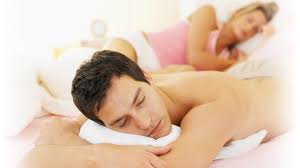
Women who experience sexual health problems as a result of insufficient hormone production may also be helped by hormone supplements, though there is thought to be an increased risk of certain cancers in women who use synthetic hormone replacement therapy. All risks and benefits should be thoroughly explained to the patient by the treating physical prior to beginning treatment.
Medical Devices
There are also numerous vacuum devices, surgical penile implants and other medical devices on the market. These devices are sometimes used to help cure sexual impotence and allow a patient to engage in satisfying sexual experiences when medication or therapy alone aren’t enough.
While many insurance companies will cover some of the costs of prescription medications approved to treat sexual disorders brought on by legitimate medical conditions, most insurance will not cover devices and treatments not specifically approved by the Food and Drug Administration.
Psychotherapy
In cases where the sexual dysfunction or inability to achieve an erection is thought to be psychologically-rooted, including long term issues with impotence, therapy may be advised. Both general psychotherapy and sex therapy may be used to help overcome mental blocks to sexual satisfaction, and help determine if medication may be appropriate.
If depression or anxiety is present, medications to treat these issues may relieve symptoms enough for the patient to see a marked improvement in sexual functioning. Conversely, if a patient who is currently on anti-depressants or anti-anxiety medication has begun experiencing unwanted sexual side effects, medications or doses may need to be adjusted to lessen the effect.
While sex therapy may not be covered by most medical insurance companies, general mental health services may be covered. Much progress can be made during general therapy, as long as the provider is comfortable with the nature of the problem. Before beginning any treatment of sexual dysfunction disorders, patients should consult their insurance company to find out what is covered and what claims will be denied.
Herbal Supplements
There are many new-to-market herbal supplements and topical creams that advertise to help those suffering with sexual dysfunction, though these are not approved by the Food and Drug Administration. For this reason, these products are not recommended, and are unlikely to be covered by medical insurance. Though there are a multitude of these erectile dysfunction supplements and creams being promoted and sold on the internet, through television infomercials and in health food stores, there is no real way to know exactly what is in them short of lab testing.
Products not regulated by the Food and Drug Administration are potentially dangerous because they often do not contain the amounts of active ingredients listed on the label, and may include additional ingredients not listed at all. Some supplements geared toward improving sexual health may contain ingredients contraindicated with prescription medications, or ones that are being delivered in unhealthy amounts.
Topical creams will not likely produce the dramatic results they promise unless they are capable of delivering medicinal levels of the hormone testosterone. Testosterone supplements are by prescription only, and should only be used under the direction of a physician.
The prognosis for recovery from sexual impotence is generally good with treatment. The first step is to identify the source of the dysfunction, and evaluate how to best approach the underlying medical condition.

